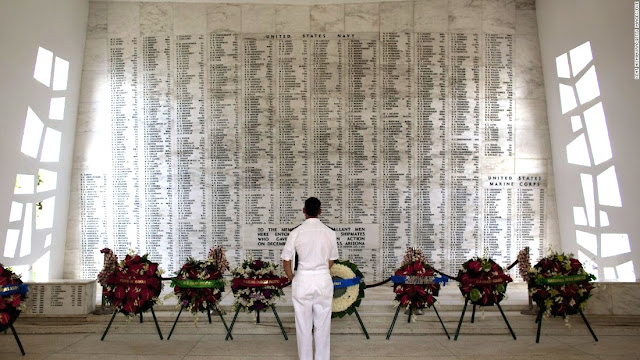I wondered why as I walked across campus this morning, and saw the American flag at half-staff in front of the UCO ROTC building.
Then I picked up a copy of the New York Times and saw the date--Dec. 7.
Seventy years ago, Americans died in the Japanese attack on Pearl Harbor in Hawaii.
I can't find my photos of my visit to Pearl several years ago when my oldest son was stationed there in the U.S. Air Force. But I saw the the 50-caliber machine gun bullet gouges in the concrete of the buildings and seaplane ramps.
I took the ferry ride to the memorial over the ruin of the U.S.S. Arizona. Ironically, both English and Japanese language was prevalent in the visitor center. And at least half of the visitors on the ferry ride were young Japanese. The card on my ticket featured a young sailor who died there--and he was from Oklahoma.
We arrived at the solemn white memorial straddling the remains of the battleship. Everybody was deathly quite--only whispers were heard. The names of the dead were on the walls. Oil still oozes from the sunken ship, where more than 1,000 sailors are still interred in water and rusting steel.
A white buoy marks where the bow of the ship would have been, and beyond, the U.S.S. Missouri, where the war ended four and a half years later in Tokyo bay, rests in final berth.
And the oil still oozes from the ship, still the tomb for more than 1,000 Americans.
And thankfully, the flag still flies at half-mast.













